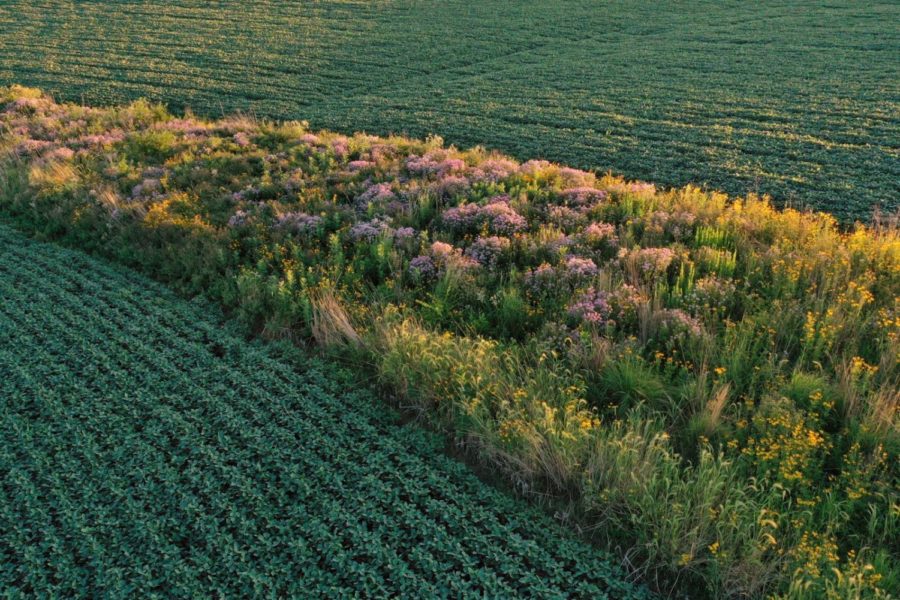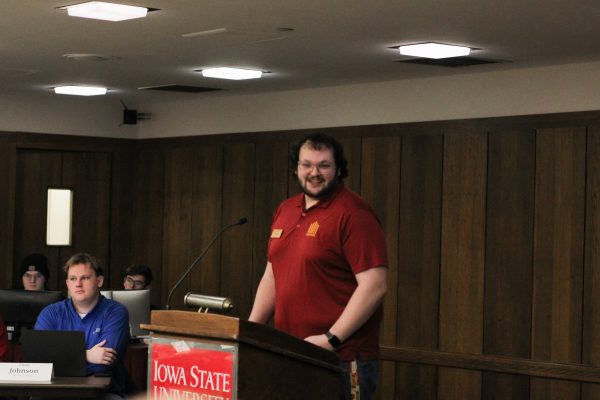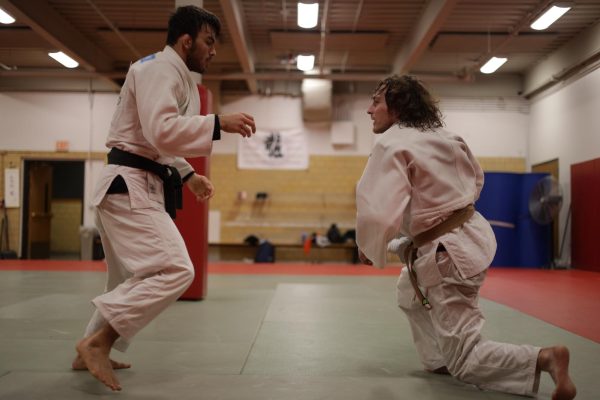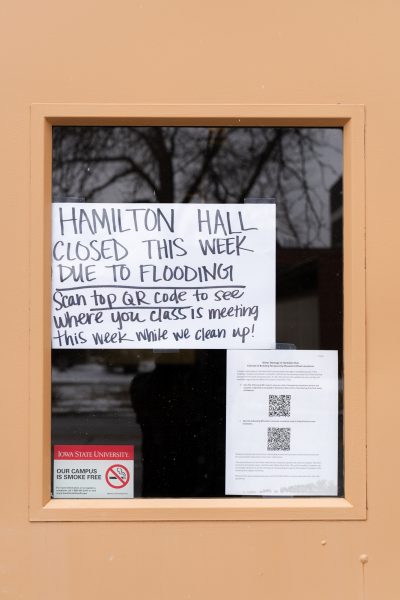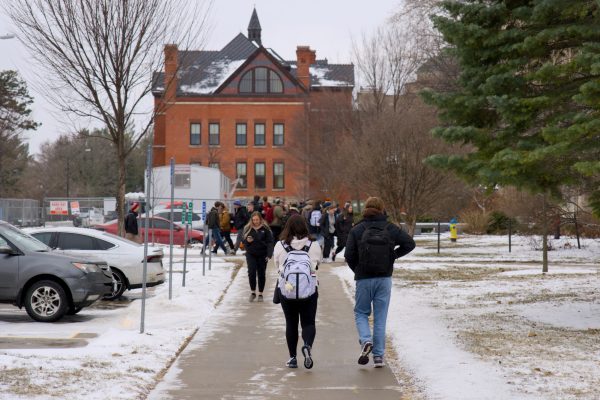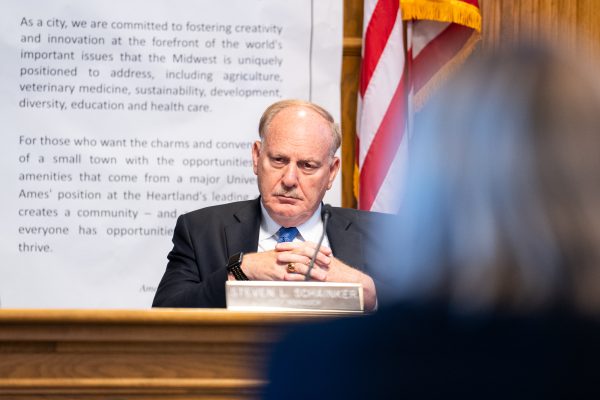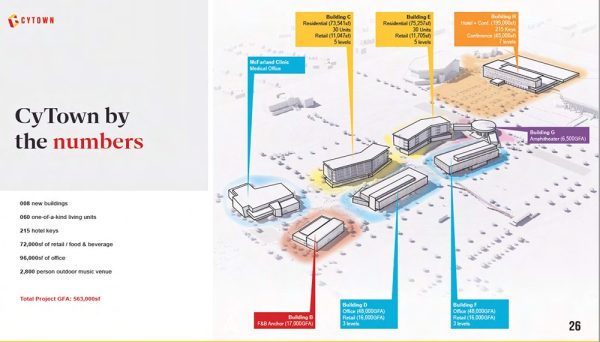Research farms used as test-beds for agriculture industries
The Iowa State Research Farms contributed to the advancement of new biofuel crops across the Midwest.
The research farms were established in 1864. Since then, Iowa State has been expanding their research farms to every county in Iowa, adding up to approximately 16,000 acres worth of land today.
Nicholas Boersma, a research scientist and site manager at the Sustainable Advanced Bioeconomy Research (SABR) Farm, said the Committee for Agricultural Development (CAD), an affiliate of the university, holds and pays property taxes for a large portion of the university’s land.
Boersma said researchers wanting to use the land for research will have to work with CARD to rent the land. He added not all of the land owned by the university is being used for research.
“[At] some of the research farms, very few researchers actually may work on it,” Boersma said. “They may just be idling in bulk crops or some other endeavor until they’re needed for a research plot.”
Boersma is currently working with a team of researchers, including Andrew Vanloocke, an associate professor in the Department of Agronomy, who is leading the study on the usage of miscanthus, sorghum, corn and soybean as biofuel crops.
Boersma said although corn and soybean are not necessarily biofuel crops, these crops are being compared to newer crops such as sorghum and miscanthus.
“Anytime you switch from an old conventional system to a new system, you want to have some type of comparison in terms of which is better environmentally, economically and fuel-yield wise,” Boersma said.
Boersma said he has been working with the introduced species of miscanthus x giganteus, a sterile hybrid, since 2008. He said this species of miscanthus is low maintenance, photosynthetically efficient and one of the highest yielding options among the perennial biomass across the Midwest.
“We plant it once we have some inputs at the front end […] some spray applications and a little bit of fertilizer, but once it’s growing, you set it and forget it,” Boersma said.
The Iowa State Research Farms also work collaboratively with other universities, companies and local farmers across Iowa to contribute to the advancement of biofuel crops in the Midwest.
Boersma said that AgroTech, a company working collaboratively with the Iowa State Research Farms, has played a vital role in presenting the role of miscanthus both in agriculture and industry.
Boersma said since miscanthus is a sterile hybrid that does not produce seeds, harvesting the crop is not an easy task. He said AgroTech has done an exceptional job at simplifying and speeding up this process.
“A massive difference between other companies I’ve worked with and AgroTech is that AgroTech has been very successful in mechanizing and streamlining the planting of miscanthus,” Boersma said.
Boersma said miscanthus plays a current role in agriculture to serve as a source of solid fuel for boilers.
“At the University of Iowa right now, they are combining miscanthus with municipal solid waste or coal and burning it in the boiler to produce heat and electricity,” Boersma said.
Boersma also said miscanthus is being utilized as a more sterile and cleaner option for bedding in the poultry industry, producing a biodegradable container often used by ranchers and farmers.
“The material itself has a very high carbon-to-nitrogen ratio, which is not suitable for nurturing bacteria, fungus and other microbes, so when using it as a bedding source, it’s very clean,” Boersma said.
However, Boersma said the risk of bioenergy crops, such as miscanthus, is the lack of market or the inability of the existing market to flourish, which deters most people from investing.
Boersma said the collaborative relationship between the research farms and AgroTech strives to nurture the increase of acreage while simultaneously developing the markets surrounding miscanthus.
“These two things kind of have to go side by side, and that’s what Agro Tech has also done well, which I think is going to help them be successful moving forward,” Boersma said.
Boersma said because the research farms are being subsidized by research grants and are not a for-profit industry, it has become the research farm’s role to serve as a test-bed for local farmers.
“For them to roll the dice on something new is really hard when they’re already gambling on factors like good weather and, potentially, diseases that might wipe out their whole field,” Boersma said. “I feel like the research farms in general are taking on that risk.”
The research of Madelynn Wuestenberg, a graduate student in the department of agronomy, is funded by the Center of Advanced Bioenergy and Bioproducts Innovation (CABBI), which is a group that comprises a combination of universities across the U.S. that focuses on research on bioenergy crops, primarily miscanthus, switchgrass and sugarcane.
Wuestenberg said CABBI’s goals are more centralized around the effects of climate change and ways to create markets for these bioenergy crops using the Iowa State research farms such as the SABR site.
Wuestenberg said based on the data collected from the SABR site, miscanthus is proven to sequester a higher concentration of carbon in its roots during the growing season, which helps absorb carbon from the atmosphere.
“We can use this data to compare it to corn and soybeans, and we can say that it’s doing a better job of sucking up all this carbon,” Wuestenberg said.
Wuestenberg uses computational modeling using a model called Agro-IBIS, which is a biophysical model that manipulates carbon dioxide concentration and calculates plant growth over a long period of time to be applied to the research farms, such as the SABR site, to validate the model.
“If we can’t accurately represent what’s happening at a field site where we have a ton of data collected now, how can we listen to this model of what it’s going to say is happening in the year 2099 or 2100?” Wuestenberg said.
Your donation will support the student journalists of the Iowa State Daily. Your contribution will allow us to purchase equipment, send our student journalists to conferences and off-set their cost of living so they can continue to do best-in-the-nation work at the Iowa State Daily.


